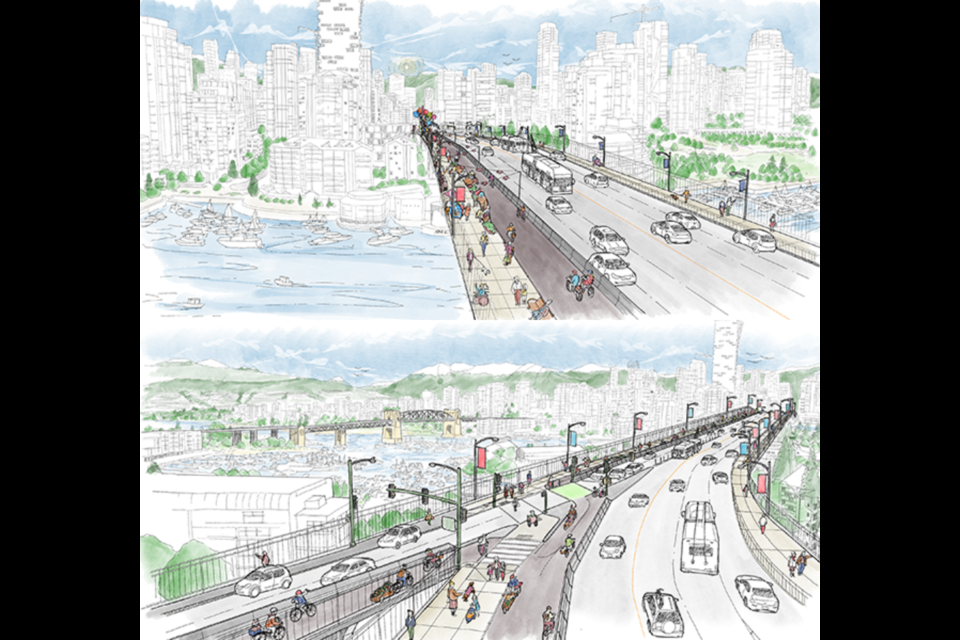The Granville Bridge connector project, aimed at creating a better experience for people walking and biking across the False Creek bridge, is starting this month.
In a technical briefing with media Wednesday (Feb. 8), the city's director of transportation Paul Storer shared plans and the schedule for the bridge's realignment, which have been discussed since 1999.
When it was constructed, plans were for a freeway system in the city, which led to the giant traffic loops on the north end. The Granville Bridge was also built with a huge capacity for traffic; the four lanes in each direction currently in place are unnecessary Storer said, with traffic studies showing two lanes in each direction would be enough and three lanes more than sufficient.
In phase one the realigned bridge lanes will see a protected pedestrian and cycling section created on the west side of the bridge, with space for bicycles to go both directions. At the same time, vehicle traffic will be reduced to three lanes in each direction.
On the north end of the bridge, the two loops will be turned into a grid system laid out like the surrounding streets.
On the south end, some new traffic lights will be installed.
Construction timeline: February 2023 to late 2024
The project's schedule starts immediately, with crews expected to be on-site later this week. They'll first be working on deconstructing the eastern loop, which moves traffic from the bridge down to Pacific Street. That'll be followed later this spring with the deconstruction of the western loop. The traffic network on the north end of the bridge will then be built along with the work on the actual bridge.
The project is expected to wrap up sometime in the last quarter of 2024. During parts of construction, there will be increased congestion on the bridge as traffic will be reduced to two lanes in each direction at times.
Storer noted the bridge connects two significant parts of the city.
"This really connects the two biggest employment centres in the province, between the downtown and central Broadway," he said, noting that 18,000 people live within a five-minute walk of the bridge, and another 90,000 within a five-minute bike ride, with even more jobs.
As the bridge is aligned now pedestrian infrastructure is poor, while cycling lanes are non-existent, he added, with the loops adding a barrier into the city. The realigned infrastructure will also make the bridge accessible to people with mobility issues.
The project as it stands now is expected to cost around $50 million, with $30 million for the loops being replaced by the street network, and $19 million for the initial bridge realignment. Funding for the project is coming from fees paid by developers and TransLink.




